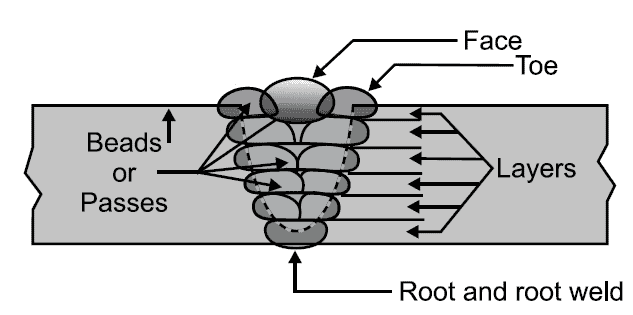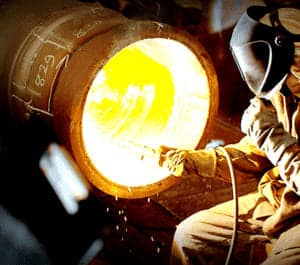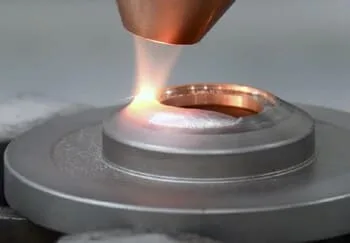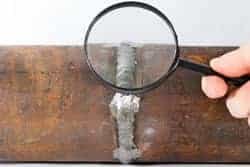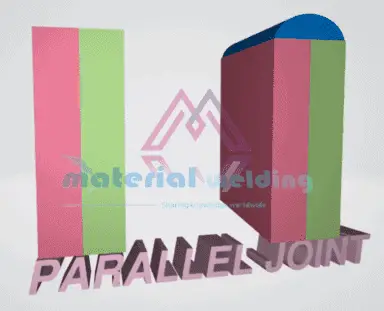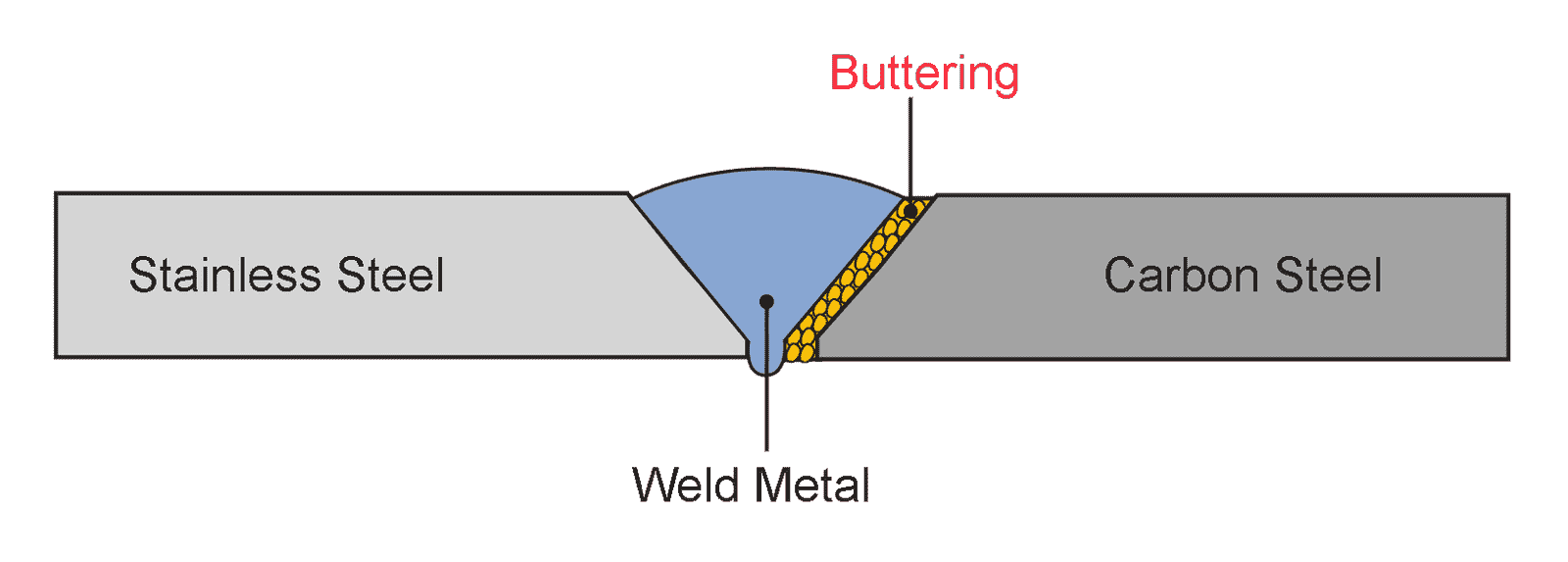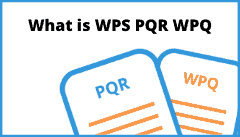What is Weld Overlay?
Weld Overlay is a welding process that applies a layer of weld material over the surface of another base metal known as substrate. The deposited material can be in the form of a weld bead, powder, or film applied by various means.
The purpose of weld overlay is to improve the wear resistance, corrosion resistance, or both properties of the base metal.
Weld overlay can be performed by any welding process that is capable of depositing a weld bead on the surface of the base metal.
The most common weld overlay processes are gas tungsten arc welding (GTAW), plasma arc welding (PAW), and Gas Metal arc welding (GMAW).
These processes are often used for deposition cladding on pipelines and pressure vessels in the oil and gas industry.
Other industries that commonly use weld overlay include mining, chemical processing, paper manufacturing, and food processing.
The thickness of the weld deposit is typically in the range of 0.5 mm to 5 mm of undiluted weld chemistry.
Related reading: Welding Dilution explained
Weld Overlay vs Cladding
Weld overlay is a process in which a layer of material is welded onto the surface of another piece of metal.
This added layer can be made from a variety of materials, including stainless steel, chromium, nickel alloys, and more. Weld overlay offers excellent protection against wear and tear, as well as corrosion.
Cladding is similar to weld overlay in that it involves adding a layer of material to the surface of another piece of metal.
Both cladding and weld overlay terms are used interchangbly in industry. Cladding is generally reffered to welding carried out using strip, also known as Strip Cladding.
What is weld cladding?
Weld cladding is a process in which a layer of material is deposited on the surface of a metal substrate.
The purpose of weld cladding is to improve the properties of the substrate, such as resistance to wear, corrosion, or heat resitance (oxidation resistance).
Weld cladding can be performed using a variety of methods, including gas metal arc welding, plasma arc welding, and laser beam welding to name a few.
The thickness of the cladding layer can range from a few microns to several millimeters. The composition of the cladding layer depends on the desired properties of the finished product.
For example, if resistance to wear is the primary concern, hard-facing alloys such as chromium carbide or tungsten carbide may be used.
If corrosion resistance is the main objective, then stainless steel (e.g., 316L metallurgy) or nickel alloy (e.g., Inconel 625 metallurgy, Monel 400) may be chosen for the cladding layer.
Weld cladding can be used on virtually any type of metal, including steel, aluminum, stainless steel, and titanium.
It is often used in applications where corrosion resistance is critical, such as in chemical processing plants or offshore oil and gas platforms.
Weld Overlay Cladding
Weld overlay cladding is a process in which a thin layer of weld material is applied to the surface of a metal substrate. The weld material can be either in the form of a strip or a powder.
The cladding process provides several benefits to the metal substrate, including improved corrosion resistance, wear resistance, and heat resistance.
In addition, weld overlay cladding can also be used to repair damaged surfaces.
What is Weld Builtup?
Weld buildup is a process of depositing additional weld metal on an existing base metal surface.
The purpose of weld buildup is to increase the thickness of the base metal, change the composition of the surface layer, or improve the mechanical or physical properties of the base metal.
Weld buildup can be accomplished by several methods, including welding with filler wire, welding with an electrode, or using a gas tungsten arc welding (GTAW) torch.
The most common reason for weld buildup is to increase the thickness of a base metal that is too thin to be safely welded without adding too much heat to the surrounding area.
For example, localized material loss in an in-service vessel due to corrosion. In these situations, weld builtup of similar metallurgy is applied to compensate metal loss instead of renewing or replacing the complete vessel.
The weld buildup process begins by cleaning the base metal surface and then applying a layer of filler metal.
This is followed by another layer of filler metal, and so on until the desired thickness is reached. Each successive layer is welded to the previous one using either an arc welding or gas tungsten arc welding process.
Weld buildup can be used on a variety of materials, including carbon steel, stainless steel, aluminum, and bronze. It is an effective way to increase the thickness of metal without compromising its structural integrity.
What is Weld Buttering?
Weld buttering is a process in which weld is applied to the base metal in order to increase its thickness, length, or ability to stop cracks from propagating. This process can also be used to mask any welding defects.
Buttering can be used to improve the strength of a weld, to repair damaged metals, or to build up metal surfaces.

